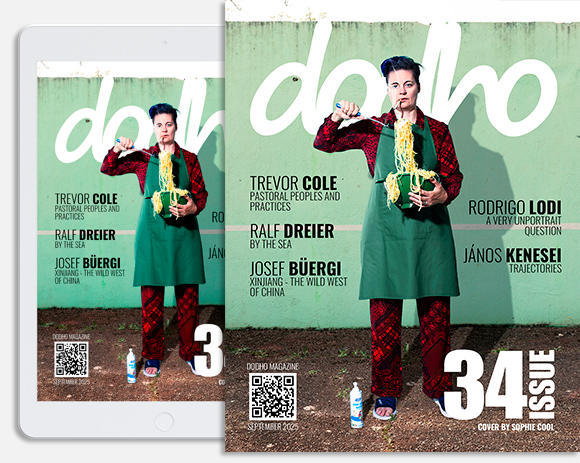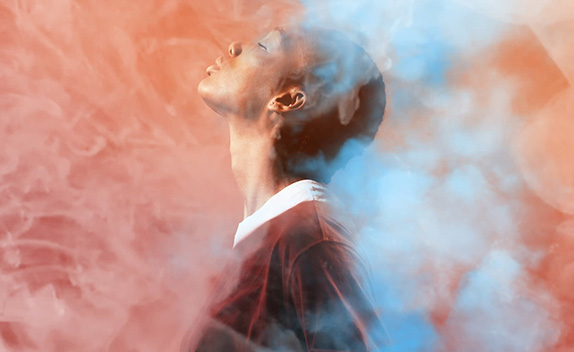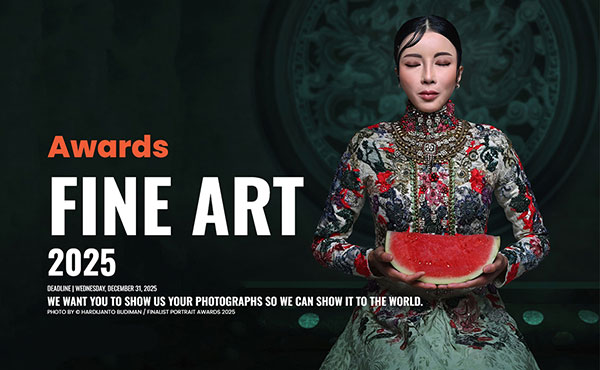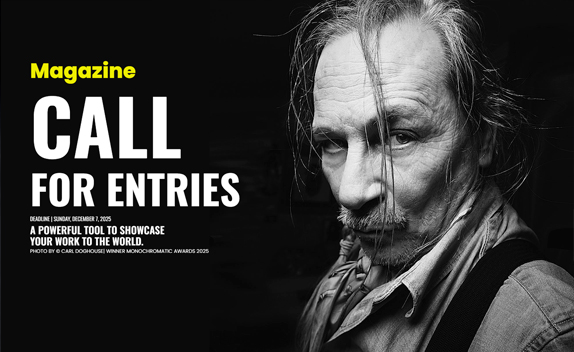Few photographic practices are as seductive as long exposure at night.
The simple act of turning the night into a continuous brushstroke of incandescence forces the photographer into a pact with time, uncertainty, and a list of risks ranging from technical failure to police intervention.
Behind each frame of several hours lies a small philosophical manifesto: the photographer chooses not to “freeze” an instant, but to condense an entire stretch of experience, like a glaze of light on film or sensor. In doing so, the scene is transformed, and so is the photographer, because standing still in front of the night requires a rare blend of patience, mindfulness, and a craftsman’s pride.
The metaphor of “painting with time” is not gratuitous. If traditional daytime photography draws with light, nocturnal long exposure is a fresco built layer by layer, banishing the tyranny of the decisive moment. O. Winston Link mastered this approach in the 1950s: his Norfolk & Western steam trains snake through rural roads, wrapped in synchronized flash halos that he himself designed and deployed with near-railroad engineering. Each shot meant orchestrating dozens of flashbulbs, plus a shutter left open just long enough to trap the train and with it, the nostalgia of steam like a luminous exorcism on silver gelatin. His “Trains That Passed in the Night” crossed the border between document and spectacle and made him the accidental godfather of contemporary nocturnal photographers.
From that analog epic to the LED-lit cities of 2025, several technical revolutions have unfolded. The promise of digital sensors with almost limitless dynamic range and the symbiosis with artificial intelligence would certainly tempt Link, but they also bring new challenges. Today’s photographers must tame thermal noise, that haze of blue pixels that ignite when the shutter exceeds twenty minutes and the sensor overheats. Then there’s blooming, a kind of electronic spill that expands point lights into blurry jellyfish, a phenomenon even studied by satellite remote sensing to map cities without letting the glow overflow. The irony is that the very lights colonizing the urban night multiply the problem: the transition from sodium lamps to solid-state diodes has forever changed the night’s palette, pushing it from melancholic ochres to the surgical whites of 4,000 kelvins. In the words of nighttime educators, the new brilliance of LEDs forces a rethink of color balances, filters, and even strategies to protect the sky from light pollution.
The risk does not end with hardware. A six-hour session on an overpass with a tripod invites all kinds of encounters with authorities, suspicious neighbors, or wildlife that has no concept of low ISO. Even in “safe” areas of the Western world, the mere presence of a camera is subject to bureaucratic rituals: filming permits, liability insurance, and sometimes a security guard supervising the shoot. In Link’s time, it was enough to coordinate with the railway company; today, you must add the police, the traffic department, and the neighborhood association that doesn’t want their terrace immortalized without consent. Paradoxically, the miniaturization of equipment and the culture of immediacy make a static tripod look more suspicious than a fleeting influencer.
Still, each risk adds a layer of adrenaline that fuels the magic. After two or three hours of exposure, the photographer enters a kind of hypnagogic state: they perceive the city as a continuous flow, forget the blinking of traffic lights, and hear the shutter’s rasp as an inner heartbeat. When the curtain finally closes and the histogram is reviewed, it reveals an invisible choreography: headlight trails tangled like staves, stars drawing perfect circles around the celestial pole, diffuse clouds whose ghost recalls the raw material of dreams. The resulting photograph does not document; it interprets. What was once twenty cars fuses into a single scarlet river; a faulty traffic light becomes a spectral imprint, seemingly painted with a dry brush.
In this transmutation lies a philosophical undercurrent that resonates with Bergson’s idea of duration: if real time is a flow, the long exposure photograph accepts that fluidity and materializes it. The traditional click kidnaps a moment and dissects it; the multi-hour shot acts as an alchemist, distilling the mobile essence of things. In a way, it restores the image’s narrative quality. The viewer, confronted with a skyline where all windows leave a persistent halo, is invited to mentally reconstruct how many office workers turned off their lights, when the last café closed, which plane left the diagonal streak across the upper margin. The image becomes a temporal puzzle, and in that strategy lies its poetry.
Yet, the modern epic carries its share of shadows. Artificial light counters keep climbing, and the International Dark-Sky Association warns that light pollution is growing by 2.2% annually, even with the widespread adoption of efficient LEDs, because higher efficiency leads to greater waste. This means photographers must retreat ever farther afield to practice astrophotography, or resign themselves to complex masking techniques to erase the whitish patina that ruins blacks. The latest sensors mitigate noise, yes, but they can’t invent lost darkness. Some authors turn necessity into virtue, documenting the very overillumination itself, turning billboards and LED panels into the vertebrae of their compositions. Others resort to reverse neutral density filters to neutralize civic lighting and rescue the celestial dome. The legal battle remains: persuading city councils to lower lumens may be more complex than capturing star trails in the heart of Manhattan.
The risks aren’t just optical: psychological wear and tear is real. The nocturnal photographer walks a fine line between the euphoria of a slow-cooked creation and the anxiety of not controlling every variable. A car parking in the frame after fifty minutes, a guard asking for “just a minute” to check paperwork, or a streetlight that switches to energy-saving mode and changes color temperature can ruin hours of waiting. Even mosquitoes, drawn to the photographer’s headlamp, can leave artifacts on cinema-grade sensors. Accepting this is part of the ritual. Veterans advise treating the scene like a film set: tape to lock focus, batteries powered by external power banks, viewfinder caps to prevent parasitic flare, a bar of chocolate, and a thermos of coffee to sustain morale.
And the magic? It remains intact, perhaps amplified by the hyperreality of LEDs that color the world as if it had been post-processed ahead of time. The painterly essence now appears in impossible blue and magenta tones unthinkable in the tungsten era. A Shanghai skyline can become a kaleidoscope of violet hexagons, and a Tokyo crosswalk leaves trails reminiscent of the digital glitch that obsesses net artists. Technology, far from homogenizing, offers more pigments. Shutterless cameras allow eight-hour exposures without mechanical wear, hot-pixel reduction algorithms clean up impurities without sacrificing detail, and nano-coated optics reduce ghosting. With each technical element tamed, the photographer regains creative risk: they can overlay a full moon’s passage with a light-painted drone, or combine long exposure with strobe bursts so that a monument appears both static and multiplied.
Against this baroque LED-era imagery, it’s worth remembering the conceptual simplicity of Link, who imagined each photo as a scene in a traveling theater. The train, the family waving from the porch, the magnesium-lit station, everything happened during the seven-second exposure and was unrepeatable. The modern photographer, with a preview screen, can redo, correct, blend times, desaturate by channels. The temptation to fall into virtuosity without substance is always there. That’s why long exposure remains, above all, an exercise in narrative discipline: it’s about telling a story that justifies the nocturnal marathon. It might be the melancholy of a backroad no one travels anymore, the aesthetic violence of a midnight industrial port, or the comedy of a couple kissing unaware that they are becoming translucent specters.
Ultimately, the philosophy of “painting with time” boils down to a subversion of contemporary logic. We live in a culture that confuses speed with value, that measures a photo’s relevance by how fast it “goes viral” before the feed refreshes. Spending six hours on a single frame thus becomes an act of resistance, almost a form of secular meditation. In the end, the author holds a surface impregnated with compressed time, something that cannot be scanned with a glance because it demands to be read like a star map or a visual poem. The viewer who accepts the challenge discovers that photography, rather than providing answers, poses the same question that fascinated railway pioneers and LED engineers alike: how to tame the night without extinguishing its mystery.
Perhaps that is the true risk and the greatest reward. Long-exposure nocturnes remind us that technology can stretch our gaze, but it should never erase the darkness that fuels the imagination. Link knew it when he illuminated a locomotive already smelling of obsolescence; photographers in 2025 know it when they walk among RGB billboards promising coffee at all hours. In both cases, it’s about preserving the surprise that, while the camera registers the night’s slow breath, the world continues to move in and out of the frame, ready to reveal its luminous trace to those patient enough to wait.






